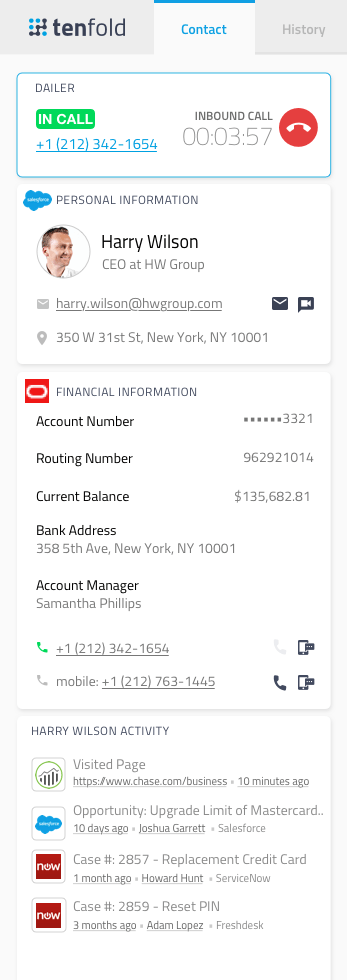Creating Customer Satisfaction: Maximize Your CRM’s Potential by Driving Full Adoption
(Editor’s Note: the following is a guest blog post from Aki Merced, a community engagement and content marketer at Tenfold. The post originally appeared on the Sugar Community).
From enterprise-level companies to SMEs, CRM software adoption continues to grow at a staggering rate, particularly in mobile and cloud-based CRM system technology. And with good reason: sales teams with mobile CRMs achieve their sales goals at twice the rate of sales teams without mobile CRMs. In fact, 91% of companies with more than eleven employees now use some kind of CRM for sales, research, and customer satisfaction. However, initial CRM implementation does not necessarily mean complete CRM adoption. In fact, discrete departments (i.e., sales teams, marketing teams) often fail to fully adopt CRM software completely or integrate it into their sales practices, which means that data and research can be largely incomplete. If your sales reps forget to enter data, then the CRM is less useful for the sales, marketing, and research teams, and can affect your business more broadly.
However, enterprise-level companies are uniquely poised to drive CRM adoption. Larger organizations, with a lot of moving parts, multiple geographic locations, and distinct operational units, are best positioned to reap the rewards of a more comprehensive CRM adoption. Large businesses can most effectively benefit from shared data between accountants, sales reps, marketers, insurances providers, and the like. Even after products have been delivered, CRM software can still track communications, contracts, and invoices across distances.
More specifically, why should your company push for universal CRM adoption?
B2B and Enterprise Sales
A quality CRM system is the cornerstone of business-to-business sales. A sophisticated B2B CRM can closely monitor your sales funnel and make up a crucial element of your B2B sales strategy. B2B sales have many different strategic elements, from initial research and specialized contacts to contracts to customer relations that join sales, marketing, manufacturing, and management. A universally adopted CRM system can track sales from their first inauguration to long-term customer service. In addition, it can share opportunities between departments, illuminate areas of possible expansion for your sales team, and standardize customer support.
In addition, full CRM adoption can support innovative modes of sales. CRM adoption gives sales teams data from which valuable insights and potential buyer motivations can emerge. These insights must be accessible to a myriad of teams simultaneously, without interrupting the sales cycle.
Large-scale enterprise sales have a lot of significant variables. Broadly speaking, your CRM should be able to track large transactions for management, everyone who works with customers, and the customers themselves. Enterprise sales CRMs are designed with large, complex businesses transactions in mind. A fully integrated CRM can have a significant mobility function, working outside the office, which can be key for a larger sales organization. Cloud-based, mobile CRMs effectively take the office on the road, to the sales force, and to the customer base.
Full adoption of your CRM is a vote for customer-centricity
Deloitte and Touche found that business that work to be customer-centric were 60% more profitable than those that are not. Companies that adopt a customer-centric approach tend to be more insistent on a positive customer experience and more successful in retaining long-term clients. A universally adopted CRM allows your business to be more customer-focused and provide that positive customer experience. An integrated CRM prevents functional silos, which prevents data management and sharing. More broadly, brands must commit to central analyze, plan, and implement a clear customer policy. In order to create this policy, all of the distinct departments of your company must be able to view the full needs and histories of the customers to provide that better experience.
Increasingly, customers are demanding more seamless interactions across different channels, with web chat, social media, and mobile apps are increasing becoming the mechanism of choice for younger professionals. A sophisticated, well-integrated CRM can provide a cross-channel customer experience that is smooth and consistent.
Enhancing the customer experience even further

However, the quality of service and engagement you can extend to your customers can only be maximally enhanced if your data is complete and accurate. Your CRM is only as good as your data–and Tenfold helps you not lose anymore data while showing you info as needed.
Conclusion
CRMs are the most productive systems to manage sales, collaborate between departments, analyze data, and provide a customer-centric experience. However, CRMs can be unproductive or even a hindrance if they are not properly implemented. It is crucial not only to find the right CRM for your company but to assimilate it completely into your large-scale business strategies.
There are several simple but effective strategies that can make this universal integration easier and more effective for your business, including demanding significant employee training, creating guidance materials, and maintaining high-level user involvement. While it may take some time to sync the CRM to your business goals and management style, the long-term payoff will be efficiency and customer satisfaction.